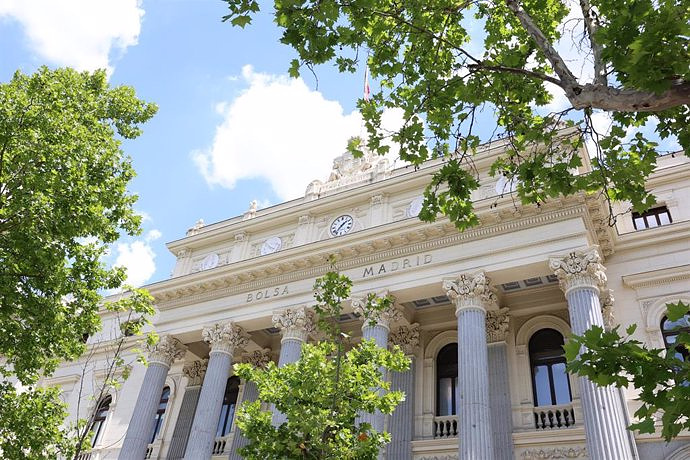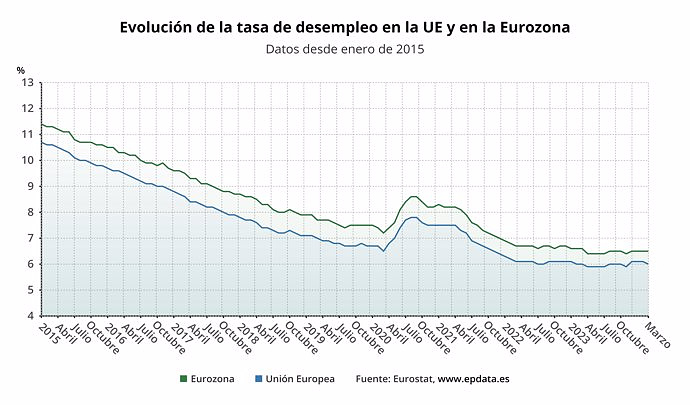A report indicates that the debt has become a political condition for negotiations with the Government and not only an economic one.
MADRID, 10 Dic. (EUROPA PRESS) -
The public debt that the Autonomous Communities have with the State has increased by 40.5% in the last decade, going from 18% in 2012 to 58.6% at the end of 2022. In this context , Catalonia is positioned as the community most indebted to the central Administration in the midst of the debate on its forgiveness after the agreement between PSOE and ERC that will forgive up to 20% of debt.
This is reflected in the Autonomous Communities Report, a study prepared by the Barcelona Public Law Observatory that analyzes the management of regional governments and publishes the evolution of the communities' debt with the State since 2012.
In this context, the study collects this data from the Bank of Spain and places 2012 as the year in which the autonomous communities had the least amount of debt with the State in the last decade, with 18.1%.
However, from that date onwards, there was a progressive increase in the percentage of public debt with the State, placing the years 2018 and 2019 with the worst figures, 61.1% debt. Subsequently, there has been a slight decrease until the debt volume stands at 58.6% in 2022.
According to the study, this extension of the debt "distorts" the behavior of the Autonomous Communities and promotes negotiation by the communities with the central Executive. Debt is no longer treated as a mere economic relationship and becomes a condition for negotiations.
What they explain is that the autonomous communities have incentives to renegotiate payments, "because they have a reasonable expectation of greater flexibility from the central government."
"In addition, all possible debt renegotiations are treated not as a mere economic relationship between creditor and debtor, but other conditions such as political pressures and tensions in intergovernmental relations become relevant," they emphasize.
In any case, during the year 2022 the autonomous communities with the highest debt were Catalonia, with more than 80,000 million euros, followed by the Valencian Community, with more than 50,000 million, Andalusia and Madrid.
These figures come to light in the midst of the debate over the forgiveness of the debt owed to Catalonia included in the investiture agreement between the PSOE and ERC in which reference was made to the State assuming up to 20%, some 15 billion, of the debt that Catalonia has with the Central Administration, plus 1,300 million in interest savings.
Something that has raised criticism among some regional leaders for negotiating this debt forgiveness bilaterally, although the President of the Government, Pedro Sánchez, guaranteed that this measure will be applicable to all communities, regardless of whether or not they are covered by the Liquidity Fund. Autonomous Region (FLA).
According to this study, the same thing happens with the public debt per inhabitant. The year 2022 closed with Catalonia as the Autonomous Community with the highest debt per capita, up to 10,981 million euros per inhabitant and also placed above the average in the Valencian Community, the Balearic Islands, Castilla-La Mancha, Murcia and Aragon.
And on the other hand, the three communities with the lowest public debt per capita in 2022 have been Andalusia with 4,433 euros, Asturias with 4,199 euros, while the Canary Islands are the territory with the lowest deficit to be distributed among its inhabitants: 2,873 euros per capita.

 Exploring Cardano: Inner Workings and Advantages of this Cryptocurrency
Exploring Cardano: Inner Workings and Advantages of this Cryptocurrency Seville.- Economy.- Innova.- STSA inaugurates its new painting and sealing hangar in San Pablo, for 18 million
Seville.- Economy.- Innova.- STSA inaugurates its new painting and sealing hangar in San Pablo, for 18 million Innova.- More than 300 volunteers join the Andalucía Compromiso Digital network in one month to facilitate access to ICT
Innova.- More than 300 volunteers join the Andalucía Compromiso Digital network in one month to facilitate access to ICT Innova.-AMP.- Ayesa acquires 51% of Sadiel, which will create new technological engineering products and expand markets
Innova.-AMP.- Ayesa acquires 51% of Sadiel, which will create new technological engineering products and expand markets Khan is re-elected mayor of London and underpins Labor's victory in local elections
Khan is re-elected mayor of London and underpins Labor's victory in local elections Felipe VI swears the flag again 40 years later at the AGM with Princess Leonor as a witness
Felipe VI swears the flag again 40 years later at the AGM with Princess Leonor as a witness Freixenet and unions agree to reduce working hours by 20-50% this year due to the drought
Freixenet and unions agree to reduce working hours by 20-50% this year due to the drought STATEMENT: Nearly 400 people participate in the II Family Support Conference at UIC Barcelona
STATEMENT: Nearly 400 people participate in the II Family Support Conference at UIC Barcelona How Blockchain in being used to shape the future
How Blockchain in being used to shape the future Not just BTC and ETH: Here Are Some More Interesting Coins Worth Focusing on
Not just BTC and ETH: Here Are Some More Interesting Coins Worth Focusing on A sensor system obtains the fingerprint of essential oils and detects if they have been adulterated
A sensor system obtains the fingerprint of essential oils and detects if they have been adulterated Faraday UPV presents the 'Origin' rocket to exceed 10 km of flight: "It is the beginning of the journey to space"
Faraday UPV presents the 'Origin' rocket to exceed 10 km of flight: "It is the beginning of the journey to space" The Generalitat calls for aid worth 4 million to promote innovation projects in municipalities
The Generalitat calls for aid worth 4 million to promote innovation projects in municipalities UPV students design an app that helps improve the ventilation of homes in the face of high temperatures
UPV students design an app that helps improve the ventilation of homes in the face of high temperatures A million people demonstrate in France against Macron's pension reform
A million people demonstrate in France against Macron's pension reform Russia launches several missiles against "critical infrastructure" in the city of Zaporizhia
Russia launches several missiles against "critical infrastructure" in the city of Zaporizhia A "procession" remembers the dead of the Calabria shipwreck as bodies continue to wash up on the shore
A "procession" remembers the dead of the Calabria shipwreck as bodies continue to wash up on the shore Prison sentences handed down for three prominent Hong Kong pro-democracy activists
Prison sentences handed down for three prominent Hong Kong pro-democracy activists ETH continues to leave trading platforms, Ethereum balance on exchanges lowest in 3 years
ETH continues to leave trading platforms, Ethereum balance on exchanges lowest in 3 years Investors invest $450 million in Consensys, Ethereum incubator now valued at $7 billion
Investors invest $450 million in Consensys, Ethereum incubator now valued at $7 billion Alchemy Integrates Ethereum L2 Product Starknet to Enhance Web3 Scalability at a Price 100x Lower Than L1 Fees
Alchemy Integrates Ethereum L2 Product Starknet to Enhance Web3 Scalability at a Price 100x Lower Than L1 Fees Mining Report: Bitcoin's Electricity Consumption Declines by 25% in Q1 2022
Mining Report: Bitcoin's Electricity Consumption Declines by 25% in Q1 2022 Oil-to-Bitcoin Mining Firm Crusoe Energy Systems Raised $505 Million
Oil-to-Bitcoin Mining Firm Crusoe Energy Systems Raised $505 Million Microbt reveals the latest Bitcoin mining rigs -- Machines produce up to 126 TH/s with custom 5nm chip design
Microbt reveals the latest Bitcoin mining rigs -- Machines produce up to 126 TH/s with custom 5nm chip design Bitcoin's Mining Difficulty Hits a Lifetime High, With More Than 90% of BTC Supply Issued
Bitcoin's Mining Difficulty Hits a Lifetime High, With More Than 90% of BTC Supply Issued The Biggest Movers are Near, EOS, and RUNE during Friday's Selloff
The Biggest Movers are Near, EOS, and RUNE during Friday's Selloff Global Markets Spooked by a Hawkish Fed and Covid, Stocks and Crypto Gain After Musk Buys Twitter
Global Markets Spooked by a Hawkish Fed and Covid, Stocks and Crypto Gain After Musk Buys Twitter Bitso to offset carbon emissions from the Trading Platform's ERC20, ETH, and BTC Transactions
Bitso to offset carbon emissions from the Trading Platform's ERC20, ETH, and BTC Transactions Draftkings Announces 2022 College Hoops NFT Selection for March Madness
Draftkings Announces 2022 College Hoops NFT Selection for March Madness
























